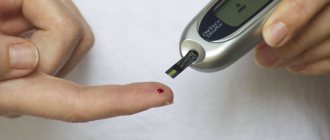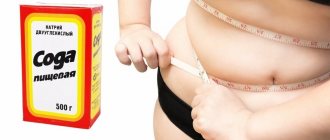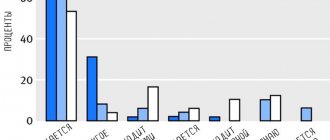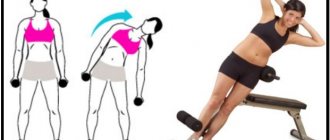Who you are? I mean, what kind of runner?
Do you usually look forward to running and enjoy movement while on the road? Or do you then enjoy yourself in the shower, feeling that you have made your body a little better?
Let's be honest: most of us do not jog out of great love for running. More likely, the reason for this was the extra piece of pie I ate yesterday, half a bottle of wine from yesterday’s party. We want to “run out” of the 5 meals we took at one time. Not motivating? Here are some facts about running and burning fat.
It's better to run on an empty stomach to speed up fat burning, or run at a low cardio intensity to stay in the optimal "zone" ("zone" refers to the most favorable conditions for fat burning).
What does burning fat mean?
When do we burn fat?
A lot of fat is burned during low-intensity physical activity. The better shape you are, the higher the percentage of fat involved in the metabolic process. And the longer the exercise, the more fat is oxidized (burned).
Burning Fat and Running
As a rule, the best way to burn fat is while jogging at a pace at which you can talk normally. According to experts, this should be a pace that you can maintain for up to 8 hours - that is, slow! Your body also continues to burn fat for 2 to 3 hours after running. If you want to get rid of a couple of kilograms, take only liquid or a little protein.
Training on an empty stomach.
If you feel alert enough to go for a leisurely run before breakfast to improve your fat metabolism, do this:
- In the morning, on an empty stomach - maximum 40 minutes.
- Maximum oxygen consumption (VO2 max) 50-60%*
(*These values are approximate. Your individual value for an ideal workout can be determined using a lactate test).
High Intensity Workouts
What's better? Long but slow “fat burning runs” or several sprints with a high load on the heart? On the one hand, during slow runs, you are in the ideal “fat burning zone.” On the other hand, intense interval training challenges your muscles.
When we bring our heart rate to the anaerobic zone, our bodies consume carbohydrate reserves and burn more calories due to the hard work of our muscles—even after a run. The reward after training will be the continuous process of fat burning. (EPOC is excess oxygen consumption after exercise).
During high-intensity, anaerobic training, the percentage of fat in the metabolic process is significantly lower. However, due to intense physical activity, the total calorie intake is higher. Plus, the body requires more energy to recover, thereby burning more fat.
https://youtu.be/rjhHwI4rGQw
In my opinion, a possible solution would be to combine a slow run (where it's easy to carry on a conversation) and a short, intense run with intervals.
Whether the body will effectively burn fat or not depends on proper diet and quality of sleep, since fat burning occurs 24/7, especially when you are fast asleep.
PS: Drink an espresso or a cup of green tea before your morning run to really boost your metabolism (due to the caffeine it contains).
Translation - Eva Volkova.
Source runtastic.com
Jogging, or jogging, is more effective for burning fat.
Why is it preferable to use a running technique called jogging or “shuffling” running to burn fat? After all, in fact, such running, it would seem, does not provide sufficient load on the leg muscles. However, this may only seem so to an uninitiated athlete. And this is not surprising. After all, for whom is running to burn fat relevant? Naturally, people who are overweight, and therefore physically unprepared, or poorly prepared. And when this is the case, then if you are overweight, or after an injury, intense running (sprinting), hurdling (obstacle running), or interval running (alternating marathon running with sprinting) is not recommended. Why? It's simple: when jogging, the load on the knee and ankle joints is reduced, and, accordingly, the risk of injury is reduced. Also this type of running, i.e. jogging can be freely used as a health remedy by people of any age and weight category without the risk of damage to the cardiovascular system and, as already mentioned, the musculoskeletal system. So, why jogging? Everyone is accustomed to the fact that in order to lose extra calories or kilograms, you need to sweat well. And therefore they strive to make their training as intense as possible, and, accordingly, short, because... this entails signs of rapid fatigue. For a “low-fat” athletic body, perhaps such a load will be enough to keep yourself in shape while burning extra calories. However, it is worth noting that the goal of people losing weight is radically diametrical. The goal of such people is to lose excess weight by burning fat! This effect can only be obtained with a duration of cyclic loads of at least 30-40 minutes without breaks. Only with a long run will your fat begin to “melt”.
What causes this phenomenon? The thing is that in the first 30 minutes of training, the body begins to waste not its fat reserves, but its glycogen reserve, which is stored in the liver and muscles. This energy reserve is created in humans so that, if necessary, it can be quickly mobilized to replenish a sudden lack of glucose, the main source of human energy. Therefore, until this reserve of “fast” energy is used up, fat burning cannot begin physiologically! And since glycogen reserves in the liver and muscles can generally reach 100-120 grams in adults, it will take at least 30 minutes, and on average more than 40 minutes, to consume these calories. The amount of glycogen accumulated in liver cells and muscle tissue depends on body weight, liver size and the amount of simple carbohydrates consumed, i.e. sugars The higher all these indicators are, the more glycogen is reserved in the tissues, which means it will take a little more time to use up its supply. Thus, the running workout should last a little longer than you would like, the same thing is said in the Malakhov run. Otherwise, calories will be consumed, but the fat burning effect will not be achieved, so the weight will remain unchanged.
Therefore, to get results - weight loss due to burning subcutaneous fat (and not due to fluid loss, as with intense short-term exercise), get ready to spend at least 40-60 minutes a day jogging. Only with this running mode is a positive effect possible. If you think this is too much time, then remember: how much time per day did you spend sitting in a chair in front of the TV, eating junk food?
But nutrition is also important when running. Then this relationship to running will seem simply ridiculous to you.
How to run to burn fat: basic rules
Running workouts are popular among professional athletes and beginners. Strengthening muscles, “drying” the body, getting rid of excess weight - the most effective type of training is selected in accordance with the goal. Only correct running, taking into account the peculiarities of physiological processes in the body, gives a positive result in a short time. For example, for intensive weight loss you should follow the following basic rules:
Run duration
A workout aimed at burning fat should last at least 90 minutes. At the initial stage, you can reduce the time to 1 hour, increasing the duration of the run gradually. Focus on your well-being. The duration of the workout is determined by the body’s ability to first consume energy stored in the liver in the form of glycogen, and only after 30-40 minutes of running does the process of fat breakdown begin.
Preparing and finishing your workout
The best time for training: in the morning from 7 to 11 o'clock, in the evening from 16 to 19 o'clock.
Before running, in order to avoid injury to the joints and spine, it is necessary to warm up all muscle groups.
You should run on a shock-absorbing surface - this could be the ground or a rubberized sports track in a gym or stadium.
Before training, preference in nutrition is given to easily digestible complex carbohydrates: cereals, pasta, bran.
If you don’t eat anything after training, the fat burning process actively continues for up to 6 hours. At this time, you can and should drink a lot, but try to go without food for at least an hour, and then eat low-fat protein foods: fermented milk products, cottage cheese, chicken breast.
IMPORTANT : Jogging along the highway is dangerous: in addition to the possibility of being injured by vehicles, you can be poisoned by exhaust fumes. Therefore, it is safer to jog in the early morning, while there are few cars on the street and the air has cleared overnight.
Selecting the intensity of the workout
A beginner athlete must choose the best way to exercise to burn fat. The best workouts for weight loss are:
- slow and long running;
- interval running;
- Cardio loads after strength training;
- high-intensity training on an exercise bike or stepper.
Loads can be high-intensity and low-intensity, depending on the heart rate.
Active fat burning occurs if the pulse during exercise is set in the range of 120-150 beats per minute. With a greater load and an increase in heart rate to 150-160 beats per minute, the body stops burning fat and switches to protein, reducing muscle mass.
Choosing what pace to run at is just as important as setting the duration of your workout. To lose weight, you need to run at an average pace - 9-12 km/h, so that the load is sufficient, but you can talk and not get out of breath.
Various types of running are used for training:
- jogging, unspecified speed, burns up to 500 kcal per hour of training;
- amateur, 7-9 km/h, burns up to 450 kcal per hour;
- sprinting, up to 30 km/h, burns up to 200 kcal in 10 minutes;
- interval running: alternating walking, jogging and sprinting, burns up to 800 kcal per hour;
- uphill, or obstacle course, speed is not determined, burns up to 750 kcal per hour;
- on site, speed not determined, up to 400 kcal per hour.
IMPORTANT: The body gradually adapts to loads, so periodically adjust your personal running program by changing one of the parameters: type of running, distance, duration, speed.
Clothes and shoes
For running training, you should choose clothes and shoes in accordance with the season, made of light, elastic materials. In winter, you will need a sports suit made of windproof fabric, a hat and gloves, and in the warm season, a T-shirt and shorts will be enough. The main requirement for running clothing is a comfortable fit to the body and freedom of movement. For shoes, choose good sneakers with ergonomic soles that ensure even distribution of the load on the foot. Well-fitting shoes reduce the likelihood of injury.
Regularity of training
To achieve results, it is recommended to run for an hour 3-5 times a week. In the morning on an empty stomach or in the evening two hours after eating. In one and a half to two months, subject to a balanced diet, the figure will become more toned, fat deposits on the stomach and sides will be noticeably reduced.
IMPORTANT : Regular training leads to an increase in the duration of the calorie burning period after exercise, and therefore, the fat burning process accelerates.
Running is not a panacea for all problems. But it helps stabilize weight and prevent numerous diseases directly related to obesity. Regular jogging changes your lifestyle, develops willpower, forces you to eat rationally and adhere to a sports and nutritional regime. After overcoming your own laziness, apathy and muscle pain, a healthy, beautiful body will be your well-deserved reward.
What is jogging and what are its features?
Jogging, or jogging, is running at a speed not exceeding 7-9 km/h. Jogging refers to aerobic cyclic exercises that involve all muscle groups in the body, and most of all the muscles of the lower extremities and the heart muscle; you can train on a treadmill.
The jogging technique has its own characteristic feature: “shuffling” or “slapping” with a relaxed foot, followed by a hard strike of the heel on the surface of the ground as a result of “bumping.” The speed of movement, as already mentioned, is slightly faster than with race walking (two steps per second). How then is jogging different from regular running? Briefly speaking, the flight phase. In jogging this phase is shorter. This is another feature of jogging: when one leg just pushes off the support, the flight phase immediately begins, i.e. period of an unsupported state, which lasts a fraction of a second, because the second leg immediately “bumps” into the surface of the earth. A feature of jogging can also be called the fact that when jogging for quite a long time, a special mood appears, called “runner’s euphoria.” This is the result of cyclical aerobic exercise, and it can be described as a state of special psycho-emotional uplift, comparable to mild intoxication. Thanks to this effect, a person’s mood not only improves, but their resistance to pain and fatigue increases. And also such people feel happier and calmer, capable of resolving serious problems, and show a greater desire for regular physical activity.
Running program for weight loss in tables
The training scheme is designed for several levels of difficulty, both for running outdoors and on a treadmill. It may take 2 to 4 weeks of training to adapt to the program. If running becomes easier, move on to an advanced level.
Outdoor running for beginners
| interval | time |
| Run | 2 minutes |
| Fast walk | 2 minutes |
The first workouts are designed for 30-40 minutes. Every week you need to increase the duration of the session and the duration of the run.
Outdoor running for those who are fit
| interval | time |
| Run | 5 minutes |
| Walking | 2 minutes |
Workouts should be 40 to 60 minutes maximum .
Training in the gym on a treadmill for beginners
| interval | time |
| Run | 2 minutes |
| Walking at an incline | 2 minutes |
Treadmill running for advanced
| interval | time |
| Run | 5-10 minutes |
| Walking at an incline | 2-3 minutes |
Before each run, you need to walk briskly for about 7 minutes.
Don't start running right away on cold muscles. After exercise, it is advisable to stretch the muscles.
If necessary, the load can be increased by increasing the speed and reducing the rest time. Thus, you can switch from interval training to continuous jogging for an hour.
When exactly should you run and how much to burn fat?
As I already wrote in another article, for fat burning it is better to run in the morning. It is at this time of day that the body has a lot of glycogen, which means the body will use fat as an energy source. The duration of aerobic exercise should be no more than 45 minutes at a pace that allows you to talk without shortness of breath.
But if problems arise with morning jogging, then I can advise you to do aerobics after training in the gym, at this moment, just like in the morning, glycogen reserves are completely depleted, running must be replaced with fast walking so that the body uses up fat deposits. This way you can increase your calorie expenditure.
What does it take to maintain muscle while reducing total calories?
Be sure to include your BCAA intake and consume casein protein before bed - this is ideal for preventing muscle catabolism. Amino acids should be consumed in the morning to reduce catabolic processes. It is also necessary to drink BCAA before aerobics.
Will you burn fat if you run in the evening?
There is no point in running in the evening, because only carbohydrates will be consumed. But if you run in the evening after working out in the gym, when glycogen reserves are at zero, then this is a good fat burning option. And ordinary evening aerobics will not really help remove excess fat deposits.
What else will help save muscles?
You need to consume at least 2 grams of protein per kilogram of body weight per day. It is necessary to count all calories and know exactly how much you consume per day. For example, you consume 4000 calories during the weight gain phase, and for the fat burning effect to take place you need to remove only 300-500 calories and watch how your weight changes. If you burn fat, then stick to this calorie content. If we start to lose muscle, then the calorie intake needs to be increased.
Find out more: protein diet for weight loss.
To save muscle mass, training in the gym should be done in a strength mode, this will help slow down the catabolism phase. The goal is not to increase weight, but to maintain the results achieved. When we want to lose weight, we need to reduce the total calorie intake so that the body begins to use fat as an energy source. But on the other hand, when there is not enough energy, the body begins to get rid of everything that consumes a lot of energy and can do without, that is, muscles. But when we train in a strength mode, the body understands that it cannot do without muscles and it begins to look for additional sources of energy, that is, it burns fat.
Don't try to drastically reduce your calorie intake to burn fat faster. This can only cause harm, because with a sharp decrease in calories received, the body reduces metabolism, and with a slow metabolism, fat burns much more slowly and accumulates faster.
In the morning, be sure to have slow carbohydrates to restore glycogen reserves and not burn muscles. After this, only protein meals. On training days, be sure to take carbohydrates, such as bananas, after training.
Read more: healthy food menu for a week for weight loss.
To unload the body from protein foods, I recommend and do the same myself: on training days, eat exclusively carbohydrate foods (and monitor the number of calories), this allows you to shake up your metabolism.
If your muscles burn too much, then aerobics should be thrown out of your training program altogether. Don’t think that running can solve the problem of excess weight.
Conclusion: to get rid of fat deposits you need to take a long-term protein diet with a meal frequency of 5 to 10 times a day. This is the cornerstone of fat burning, and running is only an additional opportunity to increase calorie consumption per day. Moreover, 90% of people do not know how to run properly to burn fat; they also have their own technology that needs to be adjusted to their own characteristics.
The ideal option is to have an experienced trainer take care of your training program and be able to monitor your results and adjust the program.
How to properly run to lose weight?
Many people run for fifteen minutes every morning, but never achieve visible results. Why is this happening? In order to start losing weight, you need to adhere to special running techniques.
In general, running is an ideal means for losing weight, since it puts an even load on all the muscles of the body at once, due to which the heartbeat and breathing become more frequent, and metabolism is activated. All these processes inevitably lead to the burning of excess fat.
Among other things, running allows you to give grace to your body and definition to your legs, without pumping up certain muscle groups.
What are the benefits of running?
The usefulness of running cannot be underestimated; it can saturate the blood with oxygen, strengthen absolutely all the muscles of the body, increase the vital volume of lung tissue, strengthen the cardiovascular system and heart muscle. It also helps increase endurance and strengthen bones.
Why does running in some cases not bring the desired results?
The vast majority of people who go for evening or morning jogs put on sportswear and go outside with only one goal - to lose extra pounds. But the time and effort they spend jogging is not enough to lose weight.
The thing is that the physiology of the human body does not allow you to lose weight by running fifteen to twenty minutes a day. But not every runner knows about this feature of the body. This is what in most cases is the reason for giving up daily jogging.
How does fat burning occur?
Most of the time people jog is easy running at a relatively low speed.
When a person runs at such a speed, the energy for his muscles comes from a substance specially stored in the liver - glycogen (this substance is sugar reserves that are designed specifically for increased load).
As a rule, glycogen lasts for a maximum of forty-five minutes of intense training.
It turns out that people who spend insufficient time and energy on running are unable to burn the entire glycogen reserve and get to fat, and therefore, at the first meal, they simply restore the amount of sugar in the liver. This is why the body cannot reach excess fat as a source of energy. This is the main reason that prevents people from losing weight during short-term jogging.
How to properly run to lose weight?
Typically, the human body switches to fat as a source of energy in cases where there is a large flow of blood to the very areas where fat deposits are located.
At this point, the concentration of oxygen in areas with fat deposits increases significantly, the person begins to feel very tired and it becomes more difficult for him to breathe.
In order to start burning excess fat, you need to jog for at least forty-five minutes, and ideally sixty. Only in this case will the metabolism be able to switch to the active breakdown of excess fat.
However, running too much is also not recommended. The thing is that fats are extremely refractory, and besides, they break down for a long time. Which forces the body to draw energy from proteins, and this leads to a decrease in muscle mass.
How to run correctly: shuttle and interval running
For those people who do not have such a huge amount of time for jogging, there is a great alternative - interval running. However, it should immediately be noted that this type of running is categorically not suitable for smokers, as well as for those who have any problems with the heart and cardiovascular system.
On topic: Running training program for weight loss
There is simply an incredible burden on the circulatory and respiratory systems, but the end result is worth it. Interval training is a workout that consists of minimal rest and maximum effort.
As a rule, it has the following form: a person walks the first hundred meters at a free pace, warming up the muscles, stretching the tendons and ligaments, increasing the increased blood flow to them. The next hundred meters need to be covered by jogging, gradually adjusting your breathing.
And finally, the third hundred meters must be overcome to the limit of one’s capabilities. The stretch should be maximum, after which you need to return back to jogging and try to restore your breathing, giving your body a little rest. After rest, the entire cycle begins again.
Important!
During such training, unusual physiological processes occur in the human body - during the maximum effort, a huge amount of calories is burned, but the energy to overcome such a hundred meters is extracted from the liver, from the same glycogen.
But already in the second hundred meters while jogging, the liver begins to break down fats, replenishing the supply of easily accessible carbohydrates and glycogen. During this process, most of the excess fat is burned.
Among other things, running at maximum capacity allows you to activate blood flow to the muscles, which promotes the oxidation of fats with the subsequent release of energy, which is stored in the body in the form of carbohydrates. After just thirty minutes of interval training, a person feels completely powerless, and his fats are actively burned. It is noteworthy that after such a workout, fat is burned for seven hours, while muscle mass remains the same.
How to breathe correctly when running?
Quite often, new runners ask themselves a similar question; you shouldn’t get hung up on such little things, it’s not that important. The main thing is that breathing is natural, so that it is comfortable for a person to breathe in this way.
You need to understand that each person has a different lung volume, and therefore it is not possible to breathe according to a certain method. For running to bring joy, you need to refresh your head and thoughts, forget about breathing, problems and completely devote yourself to running.
Only you can enjoy it and develop your own breathing technique.
Source: https://YZdorov.ru/zdorovoe-telo/kak-pravil-no-begat-chtoby-pohudet/
Burn fat and lose weight by running
04.04.2016
Many people think about running only when they allow themselves to relax in terms of food. That is, the main motivator is eating a piece of cake or a few glasses of wine, and so on. Sometimes they prepare for such holidays in advance: they run around before the planned feast. But will it be effective? We invite you to familiarize yourself with useful information about running and burning fat.
To start the fat burning process in your body, maybe you should start with a morning workout on an empty stomach? Perhaps you should opt for a gentle jog that will allow you to stay in the right “zone”? But if you want to lose weight, then intense sprinting is the ideal solution? In this material we will consider the answers to the above questions.
What is fat burning?
The human body has the ability to oxidize and burn fat. The latter is used instead of carbohydrates as fuel. This process is aerobic - fat decomposition occurs under the influence of oxygen. Simply put, fat is burned in large quantities during vigorous activity (running, cycling, Nordic walking), as a result of which the body is saturated with oxygen.
When does fat burning occur?
Most stored fat is burned during low-intensity physical activity. The better the shape, the more fat is involved in the digestive process. The duration of physical activity also plays a role: the longer it is, the more fat is oxidized.
Burning fat while running
Ideally, the fat burning process takes place, as a rule, at a running pace that is comfortable for a person. According to experts, if a person can theoretically maintain the chosen pace for eight hours without strain, then it is optimal.
In addition, the body benefits from running not only during the workout, but also after it, since it continues to burn fat for another two to three hours after the end of the run. To lose weight, it is also recommended not to eat during this period; it is better to limit your fluid intake and, perhaps, a small amount of protein.
Jogging on an empty stomach
If your form and health allow you to jog at a slow pace before breakfast, which speeds up your metabolism and promotes fat burning, you must follow the rules:
- You should run in the morning on an empty stomach. The maximum duration of a run is 40 minutes.
- The maximum oxygen consumption is approximately 50-60%. To determine the optimal training intensity, a lactate test is used.
Intense workouts
Which option will be better and more effective: long slow jogging or intense sprints? Slow running is the best way to burn fat, but the load on the muscles during high-intensity exercise, even with breaks, is greater. When the heart rate increases to the anaerobic zone, the body begins to use carbohydrate reserves and burns more calories due to increased muscle work, even after exercise.
During high-intensity anaerobic training, the percentage of fat that is involved in metabolism is lower. But with intense exercise, the number of calories consumed increases. In addition, the body requires more energy to recover, which leads to burning more fat.
The conclusion suggests itself: the optimal solution is to combine slow running in the aerobic zone (this is a pace where you can calmly talk during training without experiencing a feeling of discomfort) and intense short runs with breaks. The latter are recommended to be carried out no more than once a week.
There is another important nuance on which the productivity of fat burning depends - the quality of nutrition and sleep.
The fact is that this process lasts around the clock, without stopping for a minute and, especially, during deep sleep. Therefore, it is important to ensure proper nutrition and avoid lack of sleep.
In conclusion, it is worth paying attention to the following question: is it permissible to drink coffee or tea before a run? Green tea or espresso is even recommended before your workout in the morning. Why? The fact is that thanks to caffeine, the body starts the metabolic process
Therefore, you should not refuse such pleasure, because it will improve your mood, and jogging will give you a boost of energy.
The article was taken from the site bodymaster.ru.
Advice from professionals
Fat burners and running
» Workouts » Fat burners and running - double whammy!
A lean body is the dream of every athlete! Increasing muscle mass is most often accompanied by an increase in body fat.
But who needs quantity without quality? This is why any athlete eventually comes to a drying period. Everyone knows that there are products that promote faster and better weight loss - fat burners.
Important!
But is it possible to make this process even faster and better using traditional methods? Fat burners and running - a double blow or a waste of energy?
Through exercise, you can lose excess weight using two proven methods. In fact, there are no secrets; any physical exercise will lead to fat burning. It is also known that after training there is a more active burning of calories than during it. Two proven ways to burn fat through exercise are cardio and strength training.
Cardio
The body can safely burn calories during quiet movement. You can either walk down the street, or even use an exercise bike and pedal for a long time, while keeping your heart rate at 50% of the maximum.
If you do such training for three hours, the body will switch from burning carbohydrates to fat deposits, and adipose tissue will begin to actively burn. In addition, running is an excellent method for burning fat.
Using this method, the body begins to burn fat as early as 18 minutes.
Which method to choose depends on many factors. But it is worth understanding that at the beginning of any workout, the body uses glycogen as fuel. After the depletion of glycogen in the cells, which can be restored over time, the body begins to switch to obtaining energy from fat. However, the burning of adipose tissue occurs along with the breakdown of protein.
Using running, mechanisms for obtaining energy from the breakdown of adipose tissue are launched. The only problem is that when running, you burn not only fat, but also muscle mass.
During running, glycogen stores melt and the body switches to fat tissue + protein to create a combustible mixture for training.
If you need to burn excess fat and at the same time maintain muscle mass, then it is better to use short distance running, but at maximum speed.
Double whammy for fat loss?
We’ve figured out the fat-burning effect of running itself, but how can we connect fat burners and running? First, you need to understand that not a single drug has a fat-burning property. Almost all created drugs only speed up the process of fat burning, but do not fully engage in it. This is a kind of help for our body in losing weight.
On the subject: Normal heart rate while running
Some products are aimed at accelerating metabolic processes in the body, others prevent fats from being absorbed in the body, and still others are stimulants that increase metabolism. Another group of burners includes products with the property of releasing fatty acids. There are also very powerful fat burners that include all the functions.
You just need to understand that without training it is unlikely that you will be able to get a decent effect from a fat burner.
This is where running comes to the rescue. The fat burner works very effectively with this type of physical activity. First of all, it gives you energy for training due to stimulants + accelerates the processes started by running (consumption of glycogen and fat reserves as energy).
As already mentioned, the type of running should be chosen depending on the goals pursued: if you want to dry out while maintaining muscle volume as much as possible, then take a dose of a fat burner and choose fast running over short distances.
In principle, taking fat-burning drugs goes well with your favorite types of physical activity, so running is not something special.
Advice!
The only thing worth noting is that the fat burner itself speeds up metabolic processes and increases the heart rate, so when using running, it is very important to monitor your well-being and not overload your heart.
Well, the conclusion is this: fat burners and running are a good combination that promotes high-quality and fast fat burning, but you can include any physical activity in it: strength training, swimming, cycling - everything will give an excellent effect. The choice depends on your preferences and goals.
Source: https://www.kandeleria.ru/training/zhiroszhigateli-i-beg.html
Which running is best for burning fat?
According to the degree of load, running for fat burning can be high-intensity and low-intensity - that is, the higher the heart rate during exercise, the more intense and energy-consuming the load is considered. Both types of running are good if your main goal is to burn accumulated fat.
Many people are interested in knowing how much fat is burned when running? It is believed that the adipose tissue itself begins to “burn” starting from the 30th minute of jogging, and until this time the body uses glycogen as energy - reserves of carbohydrates consumed earlier. In one minute of running, about 8 kcal are burned (this value depends on the weight of the runner and the speed of his movement), so an hour-long run will help utilize approximately 480 kcal. If you do not forget about the daily calorie deficit from your diet, then by running for 1 hour, you can burn about 100 grams of fat tissue per day.
This is interesting
- What is doping? What doping for running can you get from a pharmacy?
- Find out how to properly create and keep a training diary from our article.
- What to do if your leg muscles become clogged when running and walking?
Running and calories: is it possible to lose weight through regular jogging?
The more a person weighs, the more calories he burns when running. How many calories does an obese person burn when running? For example, with a weight of 90 kg, a person will spend about 750 kcal per hour of training, while our example with a woman weighing 70 kg shows that she lost about 600 kcal during an hour's run. The difference is significant. But for people who are too overweight, a large loss of calories when running is not yet an indication for using this method for losing weight.
The fact is that with a sufficiently large body weight, running puts too much pressure on the knee joints and feet, which can result in serious damage to the tendons and ligaments. People weighing more than 90 kg are not recommended to lose calories while running - less traumatic weight loss programs are provided for them.
Well, for people with less critical parameters, burning calories by running is not only a necessary, but also useful activity. When jogging, metabolic processes in the body are accelerated, the blood vessels of the brain and cardiovascular system are trained, muscles are strengthened and the body's endurance increases.
Experts advise running no more than 3-4 times a week. They explain this by the fact that when running there is such a strong “shock” for the body that it is impractical to withstand such a load every day. For optimal calorie burning when running, you should train in the morning - then the load occurs with double force and the effect is achieved faster. However, there is a lot of controversy on this topic: doctors do not recommend morning running due to the high risk for blood vessels, since in the morning all body systems have not yet entered the “working” rhythm. The risk of having a stroke and other possible consequences of such overloads is too great.
The best option for losing weight is running in place. It is performed at any time of the day and does not load the body as much as regular jogging. When running in place, you lose a little less calories, but if you follow certain rules, you can achieve excellent results.
LiveInternetLiveInternet
Thursday, May 15, 2008 21:36 + to quote book tu-154
all posts by the author Today we bring to your attention an article that I discovered while surfing Google.
An article about sports nutrition, how to run, what modes, how you can quickly lose weight, lose muscle mass. Sooner or later, each of us, having made the decision to quickly lose weight and choose a balanced diet, thinks about physical activity and how it can contribute to a faster loss of extra pounds and achieving the desired goals. And here many questions arise: how to train most effectively, what types of activity to prefer, how long and when. There are TWO methods that can force your body to burn maximum amounts of fat through exercise. Any exercise will lead to fat burning through one of them. In addition, the body burns more calories from fat stores AFTER TRAINING than without training. In this sense, it is clear that it is not so much the method of fat burning that is important, but rather it is important to include training in your daily routine. Methods for burning fat during training First. The body burns fat well during long, quiet movement. Examples would be long walks or pedaling an exercise bike slowly and for a long time, with a heart rate of approximately 50-60% of maximum. After three hours of this continuous movement, the body begins to burn more fat as fuel than carbohydrates. Second. The body burns fat well during intense exercise, such as running or cycling, at 70-80% of your maximum heart rate. With this method, about 18 minutes into your workout, your body will burn more fat than carbohydrates. After any workout for 6 hours, the body will burn more fat than carbohydrates. Which method should you choose? Here you need to ask yourself: 1) do I have time to practice the first method? It can, for example, be practiced while watching TV in the evening; 2) can I study using the second method? Can I run fast and non-stop for longer than 18 minutes? In any case, at the beginning of a workout, glycogen (sugar in cells obtained from carbohydrate foods) is burned as fuel. Fat and some protein are burned at the same time, but in smaller quantities and not as quickly. The body has a favorite recipe for fuel, certain proportions of calories from protein, fat and carbohydrates that it prefers to rely on. As glycogen is burned, cells restore as much of its reserves as possible. As soon as cells lose the ability to cover the required percentage of the combustible mixture with glycogen, the body immediately notices this and signals the fat cells to release energy from fat. During training, this signal to fat cells will be an increased flow of oxygen and increased blood circulation. These two processes stimulate fat cells. Running helps you quickly start burning more calories from fat than from glycogen. If you jog at a speed of 9 km per hour, then after 40 minutes you will begin to burn more calories from fat stores than from glycogen stores. If you run at a speed of 14 km per hour, then after 20 minutes of running you will burn more than 50% of all calories from fat. Sounds good, long live fast running, right? Yes and no. The fact is that while running, a loss of muscle mass may occur. If you run more than 8-12 km a day, then at this distance glycogen reserves are completely depleted, and the body begins to consume protein in increased quantities (the combustible mixture will consist of protein and fat). Not the protein you ate, but the protein that makes up your muscles. This is why marathon runners are so skinny. Long distance running helps you burn a lot of fat, but you will also lose muscle mass! If you're looking for results like these, rely on long-distance running. Here's another example from running: runners who strive to run as fast as possible, but over relatively short distances, do not have a drop of excess fat, and their muscles are excellent. After they sprint a hundred meters, they rest for 15-20 seconds. The hundred-meter distance will be covered almost entirely on glycogen alone, and during rest its reserves will be completely restored. And during REST, the body will burn pure fat! This way, the body will not eat its own muscles. You can continue this way for 20-40 minutes (pure intensive training time, subtracting rest time). The body then begins to burn more fat than carbohydrates during fast running. And AFTER the workout, the body will continue to use such a “fatty” combustible mixture for 6 hours. In general, interval training is considered the most effective for losing weight and body fat because it burns a lot of calories overall: during short 15-minute interval workouts and during “rest” periods. This, plus the fat burned AFTER the workout, gives us excellent results. In addition to running, walking and cycling, weight training can help you burn fat very effectively. During moderate to heavy strength training, 60% of the fuel mixture is fat! Thus, strength training is almost equivalent to interval training as a method of fat loss, but it is superior in the number of calories burned. In an hour of interval training you will burn approximately 450 kcal (depending on body weight), and in an hour of strength training - 700 kcal. Unlike aerobic training, strength training builds muscle mass. And the more it is, the less fat there is in the body, because the growing muscle maintains a rapid metabolism for 15 hours after training, and the energy consumption of the muscle growth process is completely provided by “fatty” fuel. Fat burners However, in addition to proper training and a balanced diet, special nutritional supplements, so-called fat burners, will help you lose weight faster and train more effectively. Fat burning supplements are a very broad class of nutritional supplements that contain products that have very different properties. And almost no supplement has true fat-burning quality. All drugs can be divided into several groups. The first group activates metabolism and does not allow the body to absorb the fats that you took with food. These properties include fiber (sold in pharmacies and health food stores), as well as peptides and preparations obtained from crustacean shells (for example, the Chitosan product from Weider). These products should only be taken with food; there are no contraindications. The second group of fat burners includes the so-called amphetamine drugs, such as caffeine, ephedrine and aspirin, the purpose of which is to force the body to produce additional heat in order to speed up metabolic processes. There are a lot of drugs using combinations of these substances, but the most effective and popular among fitness enthusiasts is the combination of caffeine and ephedrine. In addition, such drugs are “convenient” because they “inflate” the psyche, and you will be able to exercise longer and more actively, which is why you will lose weight. However, you need to remember that this type of fat burner is not suitable for nursing mothers, pregnant women and people with heart problems, so the dosage and method of administration must be discussed with a qualified specialist. The third group of supplements promotes the release of fatty acids. L-Carnitine has this property. Today it is a very popular nutritional supplement that is included in almost all fat-burning complexes. But you need to keep in mind that carnitine needs about 30 minutes for it to reach its point of action, the muscle cell, after taking it. Therefore, liquid forms of carnitine should be drunk 30 minutes before the start of aerobic exercise, and carnitine tablets should be taken at least 40 minutes before. There are no contraindications for use; it is recommended to take it in courses, taking a break between them. There are also supplements that increase the sensitivity of muscle and other tissues to glucose and cause them to burn more energy per unit of time, creating a mild energy deficit. This, in turn, leads to increased mobilization of fat from the depot and, consequently, to a decrease in body fat. Chromium picolinate has this effect. It is contraindicated for people prone to diabetes, pregnant and nursing mothers. In addition to the fat burners listed above and today’s popular ones, more and more new drugs are appearing on the market, which are supposedly several times more effective than proven products. We are talking about fat burners such as pyruvate, green tea extract, guggulsterones, as well as special topical creams based on forskolin, aminophylline and yohimbine. However, the cost of these drugs is too high, and they are still too poorly studied to speak with confidence about their clear benefits. All fat burners help the body pull fatty acids from storage and release them into the bloodstream, where they can be used by the body for physical work. But if you don't exercise and lie on the couch, the acids either come back or clog the liver and settle on the walls of the arteries. Therefore, you should not trust drugs that promise you a quick weight loss of 10 kg in a month without increasing physical activity and diet (a person will not lose weight if he takes fat burners and overeats) - this is just a clever advertising gimmick that does not deserve your attention. I’ll add on my own – drinking 7-8 glasses of water a day is MANDATORY for the formation of proper metabolism and effective weight loss. Article taken from the website www.dietolog.com.ua Tags:
health lose weight running fiber fat burners lose weight l-carnitine glycogen
Cited 9 times Liked by: 1 user
Like share
0
Like
- 1
I liked the post - Quoted
- 0
Saved
- Add to quote book
- 0
Save to links
Liked1
0
Jogging
So, the question is: how many calories does jogging burn? If you are a beginner, if you have just started running, then your kilocalorie consumption will reach 500-600 kilocalories per hour, but if you have already mastered this running technique perfectly, and this is a matter of a couple of months, then you can burn one and a half thousand kilocalories with 2 hour jogging session. Jogging is, so to speak, a starting point; all people can do this kind of jogging: overweight people, women and men, even for children this jogging is extremely useful
Jogging is, so to speak, a starting point; all people can do this kind of jogging: overweight people, women and men, even for children this jogging is extremely useful.
It burns a small amount of calories (relative to others), but is ideal for a beginner.
Best time to burn calories
Many people prefer evening jogging and walking in order to saturate the body with oxygen before bed and fall asleep with pleasant fatigue. If you want to lose weight, it is much more effective to run in the morning. Moreover, run not after breakfast, but before it. By the way, walking also helps you lose weight.
The morning, when a person has just woken up, is the best phase of the day, since it is in the morning that our body is prone to burning energy. In the morning, each of us experiences carbohydrate depletion, which lasts until we have breakfast or drink coffee.
Just before breakfast, the body saves glucose, while allowing it to burn extra calories. When we run in the evening, our body has already consumed enough food, and by running you burn glucose before calories.
Conclusion: we wake up early, do a proper warm-up and start running, that’s what it’s like in the morning.
How to run correctly to lose weight and burn fat
Who you are? I mean, what kind of runner are you?
Do you look forward to your run and enjoy every movement on the track? Or do you happily shower after a run, feeling like you did a good deed for your body?
- How to run to lose weight? What does “fat burning process” mean?
- When do we burn fat?
- Workouts on an empty stomach
How to run to lose weight?
Let's be honest: many of us don't just wear sneakers for the love of running. More likely because of yesterday's piece of chocolate cake, or half a bottle of wine you allowed yourself at the birthday party, or because we want to "run out" of the planned five-course dinner. But will it work? Here are some facts about fat burning and running.
Is it better to run on an empty stomach to kick-start your fat-burning mechanism or to jog at a low heart rate to stay in the right “zone”? Or maybe you should run short distances, giving it your all, to get rid of extra pounds? Today, I will shed light on how to run for weight loss and how to best burn fat while running.
What does “fat burning process” mean?
Fat burning refers to our body's ability to oxidize or burn fat. The body uses fat as fuel instead of carbohydrates. This is an aerobic process - fat decomposes under the influence of oxygen. In general, more fat is burned during activities that oxygenate the body, such as Nordic walking, running or cycling.
When do we burn fat?
Most body fat is burned during low-intensity physical activity. The better shape you are, the greater the percentage of fat involved in the digestion process. And, the longer physical activity lasts, the more fat is oxidized (burned)
Fat burning process and running
As a rule, the fat burning process is ideal when you run at a pace that you feel comfortable with. According to experts, this is a pace that you could theoretically maintain for 8 hours without straining yourself.
Plus, you can reap the benefits even after a run, as your body continues to burn fat for another 2-3 hours afterward.
If you're looking to lose a few pounds, try to get by with just fluid intake and maybe a little protein in the meantime.
Workouts on an empty stomach
If you think you're in good shape for a slow jog before breakfast that will boost your metabolism and help burn fat, do the following:
- In the morning, on an empty stomach – 40 minutes maximum
- At maximum oxygen consumption (VO2max) 50-60%*
(*These values are approximate. You can determine your personal ideal training intensity using a lactate test.)
High intensity training
What's better? A longer, albeit slower, fat-burning run or a few high-heart-rate sprints? On the one hand, during slow running you are in the ideal zone for burning fat. On the other hand, the stress on your muscles during intense, intermittent workouts is even greater.
When we raise our heart rate to the anaerobic zone, our bodies begin to use stored carbohydrates, and burn more calories due to increased muscle activity - even AFTER a run.
During high-intensity anaerobic training, the percentage of fat metabolized is lower. However, due to intense exercise, the total number of calories consumed is higher. In addition, the body needs more energy to recover, and thus burns even more fat.
In my opinion, a possible optimal solution would be a combination of slow, relaxed runs in the aerobic zone (where you can freely carry on a conversation while jogging) and short, intense runs with intervals (which, however, should not be done more than once a week ).
Whether your body burns fat productively or unproductively also depends on proper nutrition and the quality of your sleep, since this process lasts 24 hours 7 days a week, especially when you sleep soundly.
Important!
PS Drink espresso or a glass of green tea before your morning run to kick-start your metabolism (thanks to the caffeine content).
Disadvantages of running on an empty stomach
Short term high intensity training
Since a lot of energy and calories are consumed while running, you can quickly feel hungry and tired, because the body has already exhausted its existing reserves and has not received any additional fuel . Because of this, it is extremely difficult to maintain a high pace and not reduce the speed of training.
High risk of subsequent overeating
When the body does not receive calories before running, it demands them with redoubled force after. Those who are prone to overeating in everyday life should be especially careful not to gain at least a couple of kilograms instead of losing weight. It is also worth mentioning that some people confuse the feeling of hunger with thirst . If you didn’t drink enough while running, your dehydrated body will give signals about the need to quench your thirst, which can be inadvertently mistaken for a desire to refresh yourself.
Slightly accelerates the fat burning process
There is a myth that running on an empty stomach magically burns fat reserves and is ideal for weight loss. In fact, this is not entirely true. The body can indeed use energy from fatty acids, however, due to the inability to fully maintain high training efficiency, the body will work on energy obtained from carbohydrates rather than fats. To really speed up the fat burning process, you need active training at a high speed . Unfortunately, only experienced and professional runners can consistently push themselves to such a maximum on an empty stomach.
Possible loss of muscle mass
The risk of gradual loss of muscle mass is due to the fact that without replenishing carbohydrate and glucose stores, the body will begin to use muscle protein for energy during running . In fact, this can happen if you overdo fasted cardio and eat poorly throughout the day.
In addition, proteins begin to break down only after glycogen reserves have been depleted and the body has already received energy from free fatty acids. As a rule, already at the stage of glycogen depletion, athletes already begin to experience weakness, possibly dizziness, and severe fatigue. And to reach the stage of protein destruction, you still need to try very hard!
Why don't you want to run?
But what if the idea that it’s you who needs to do this just doesn’t stick in your head? The answer is as simple and obvious as it is unbearably unacceptable for each of us. The reason for this rejection of running as a way of life lies in the mentality that shapes our society. After all, since childhood, most of us have experienced the fear of becoming a “black sheep,” especially if we are not able to protect ourselves either physically or intellectually.
As a result, the vast majority of us grow up with an inferiority complex, which shapes our entire life, the pattern of our behavior and, unfortunately, the way of our life. But don’t you feel envious when you look at those who are doing their morning jog in the middle of the day, surrounded by people walking in the park? But these are the same people as 99% of the population.
Only they are not afraid of the opinions of others, they do not pay attention to remarks addressed to them. They are firmly convinced that no one except themselves will take care of the beauty and longevity of their body. And no one will convince such people that taking care of health is the most important thing in life, after taking care of spirituality, of course. After all, it’s not for me to explain to you that most diseases are our own fault, and we could get rid of them if it weren’t for the lifestyle that we choose for ourselves.
Well, no one can force you but yourself. But the benefit, which is inevitable, may go to someone else. And in the future you shouldn’t complain about fate: why am I so fat. Or: why am I so sick. Fat because he's sick. And he's sick because he's fat.
The benefits of running
Therefore, there is only one way out: take care of your body and health, which, as a result, are one and the same.
And since running is:
- an effective way to improve metabolism;
- promotes fat burning;
- lifts the mood;
- prolongs youth and life;
- improves stress resistance in the work environment;
- increases endurance of all muscle groups;
- develops the respiratory system;
- a productive method of creating muscle definition in the legs;
- strengthens the tone of the heart muscle;
- normalizes blood pressure;
- promotes the overall health of the circulatory system, internal organs and tissues... then this is one of the most productive ways to lose excess fat and become a healthy person again.
Bottom line
Running is a truly powerful exercise for those who want to lose weight. The problem for most is that during the first training they do not see the effect and give up. Ask any athlete, even any person who was once overweight and has now lost weight: “What is the most important thing in losing weight?” He will tell you that the main thing is patience and work (both in diet and in sports).
In this regard, start little by little, start with easy running, just a couple of weeks will be enough to get the hang of it and start running more efficiently.











